by Edith Salminen
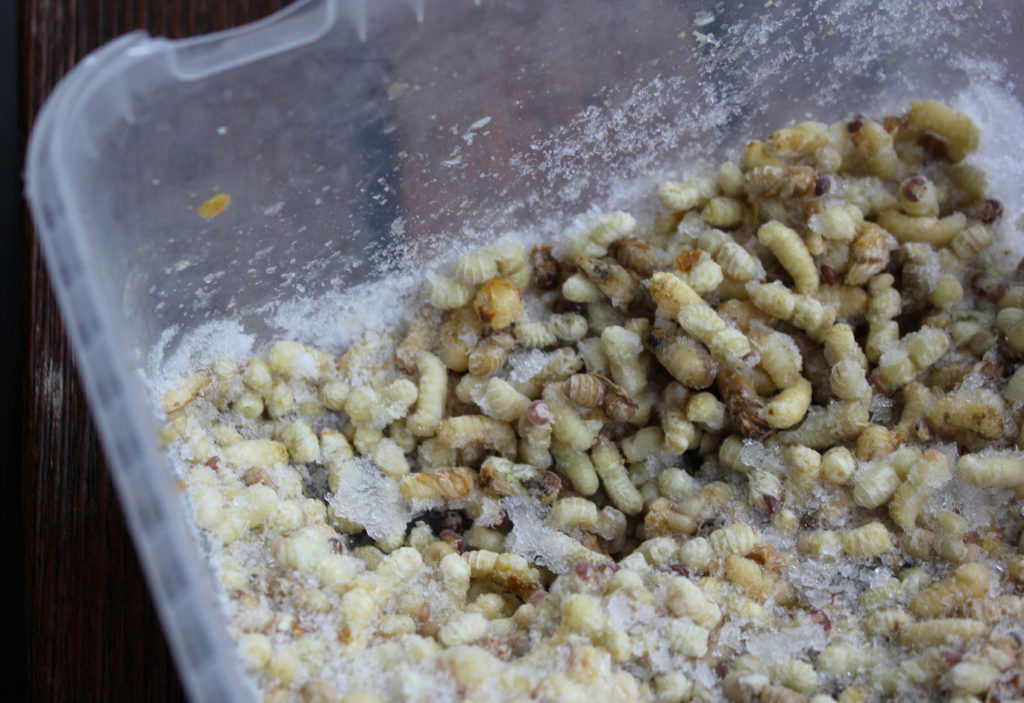
When a fellow researcher here at the Lab asks me whether I’d like to give him a hand doing field work for his thesis, meaning feeding random Copenhageners bee larva soup, I say “Ja tak!”
Could there possibly be a better way to spend an afternoon?
Jonas Astrup Pedersen is the Larva-man. Now an almost-graduated Master in Food Science and Technology at University of Copenhagen, Jonas has been in and out of this rocking houseboat for as long as some of the oldest ferments downstairs. He is passionate about sensory analysis and experimentation, coffee and sourdough bread – really everything gastronomy. Being one of the only Danes on board, Jonas has been a wanted man these days, requested to address various food-related topics on Danish national TV and radio. Blood and gluten are some of the more recent ones. When he’s not busy doing public appearances that is, Jonas is keen on discovering how neophobic – or neophilic – Danes are in their foodways. Ever since November, I’ve been sitting across from him at the Lab watching him meticulously busting his brain for his master’s thesis on unravelling how people perceive and accept novel foods, using bee larvae as a case study. The Lab for him – as for us all – is both his playground and safe-zone for quirky and delicious experimentation. Stepping out from this inspiring and encouraging cradle can sometimes get rather knotty.
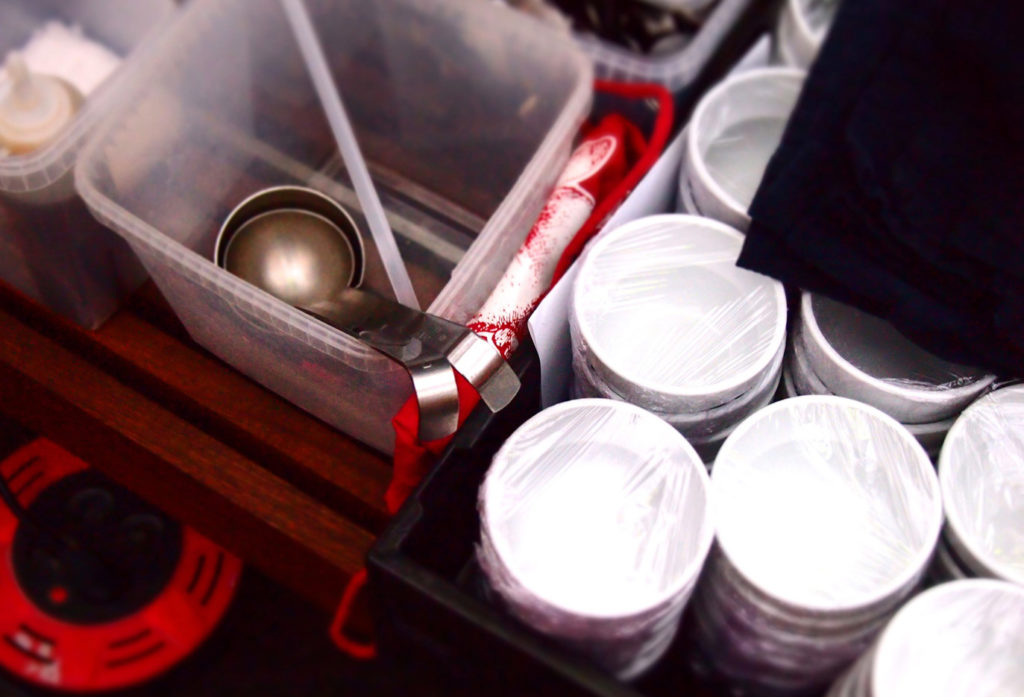
“If we manage to get 70 people to try the soup today, that would be great,” he says with his characteristic grin, as we start prepping the vegetable and bee larva soup in the morning for our first service. It says ‘VISIBLE LARVAE’, ‘INVISIBLE LARVAE’, ‘NO LARVAE’ on a sheet of paper next to the cutting board on the stainless steel island. Three soups, one base recipe with three slightly different variations. Will people want to see the larvae as they savour the soup, or is ignorance bliss? Will the bee larva flavour be a sought-after twist to a perfectly acceptable but otherwise banal veggie soup? Let’s see.
By now, two months into my internship at the Lab, I’ve learned to recognize the very distinctive smell and flavour of the fatty little creatures: nutty and buttery, sometimes even mushroomy, and to me much like this ubiquitous Swedish “liver” paté that comes in a tube (super addictive). I’ve only had them straight up deep frozen and in Jonas’ soup, but Josh describes fresh and alive bee larvae as something close to fish roe in texture, very delicate and “fucking delicious” in flavour. Listening to Josh’s description, I got the oddest urge to pop one of those alive babies in my mouth. Deranged? Totally, but also far from it. Talking about how bee larvae burst against one’s palate… I can but smile, stir the soup and see how the tasty little suckers float around in creamy veg stock together with carrots, celeriac, leek and onions. The whole boat smells of sautéed bee larvae. Yup, very distinctively bee larvae indeed. And we love it.
Off to the larva-mobile!
The Larva-man has chosen to do his guerrilla soup tasting at three different locations in order to reach the maximum variety of people. This excites me. Not only do I get to see Copenhagen’s many sides, but I’ll also get the chance to observe different people accepting or refusing insects as an edible food item. The socio-anthropologist in me is on alert.
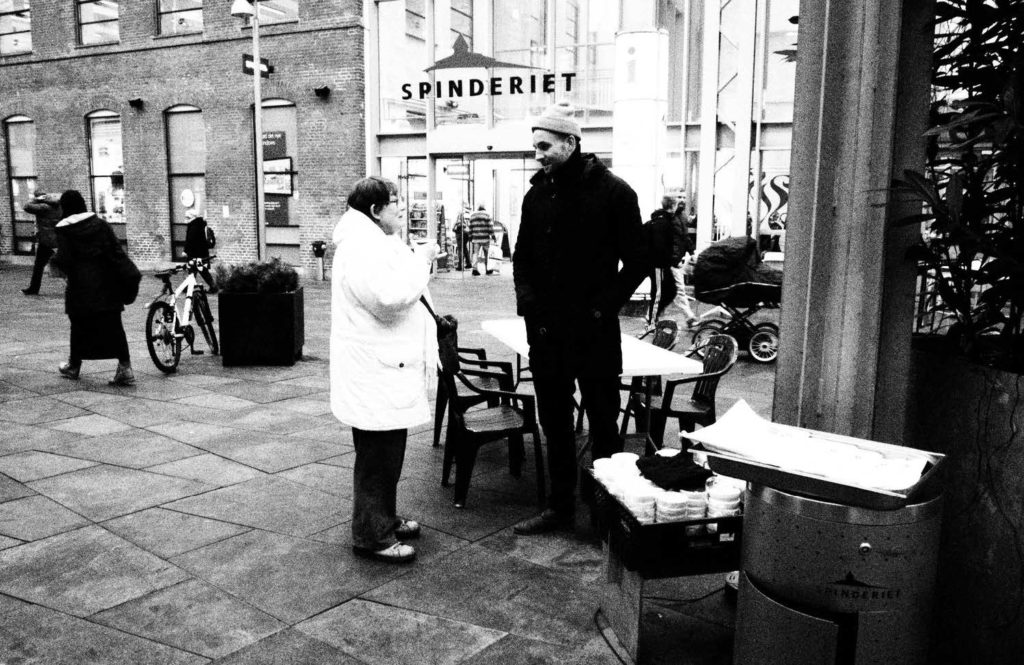
First up, a suburban square by Spinderiet mall in Valby, a 15 minute bike ride away from the centre of Copenhagen. Valby is a kind of grudgy neighbourhood further west from the hipster central Vesterbro. Second stop, the humongous shopping centre Field’s erected in the middle of nowhere, on a field, hence the (not very original) name. At Field’s you get all kinds of people, students, teenagers, families, locals and foreigners: a mish-mash of people living in Copenhagen for different reasons. Last stop, Torvehallerne right by Nørreport station. This bourgeois-bohème indoor market is where the well-off Copenhageners buy their (very expensive) food. It’s also a favourite amongst tourists. Of all three locations this is surely the most foodie-like of them. Our presumption is that the higher socio-economical status might correlate to an increase of the acceptance of our experiment.
“These are places where we’ll find normal people,” Jonas explains. “Normal people” are a rare breed here at the Lab where the next person stepping on board this mad, floating research centre is probably somehow loonier than the previous one. We often forget about “those other types of people” who might not, with immense appetite and lust for umami, attack a container filled with more or less mashed and rotten edibles or, for that matter, a fragrant bowl of bee larva soup. We didn’t really discuss this potential challenge beforehand, but we certainly expected to be confronted with it to varying degrees in the different locations.
Jonas and I head to the first location right after lunchtime, our car loaded up with our three steaming soup pots. I wonder how many Danes will choose a side of larvae over a kanelsnurrer with their afternoon coffee? As my Danish is not quite there yet, I told Jonas I’d do the people hunting and lure them in for him to feed them larva soup. Game on.
(Click through the photos below of some of our intrepid participants)
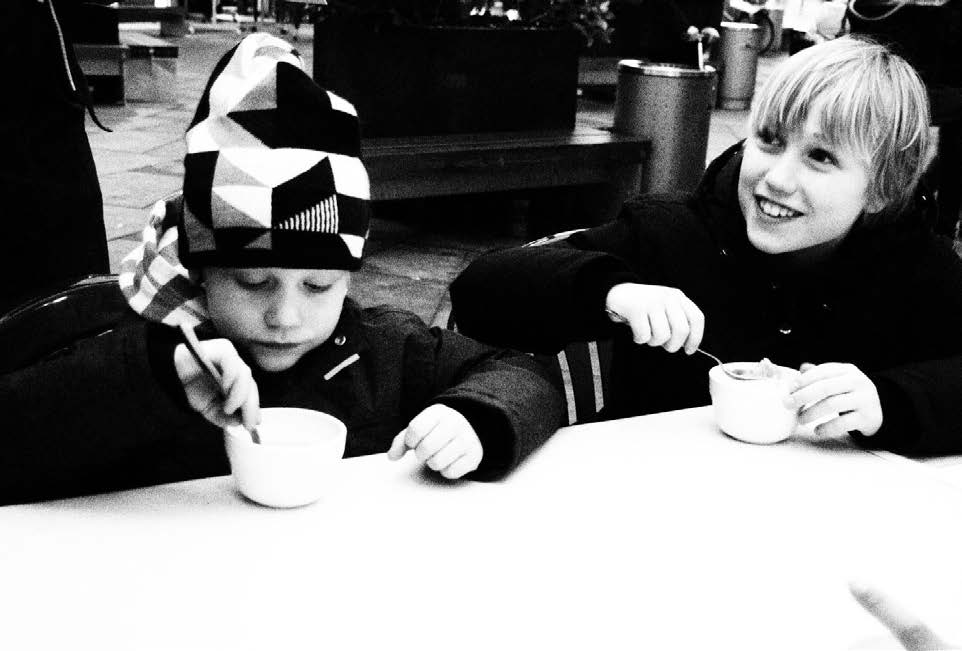
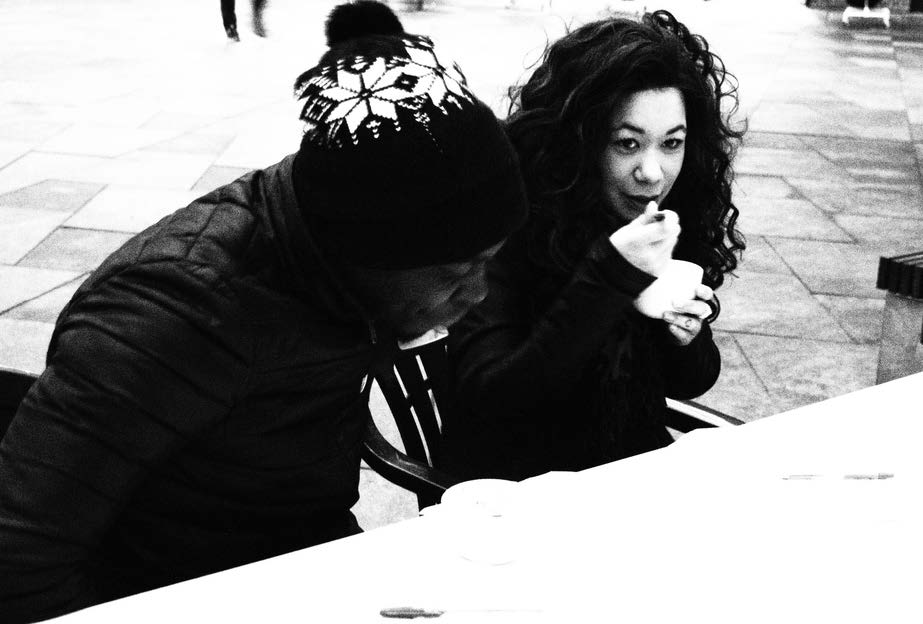
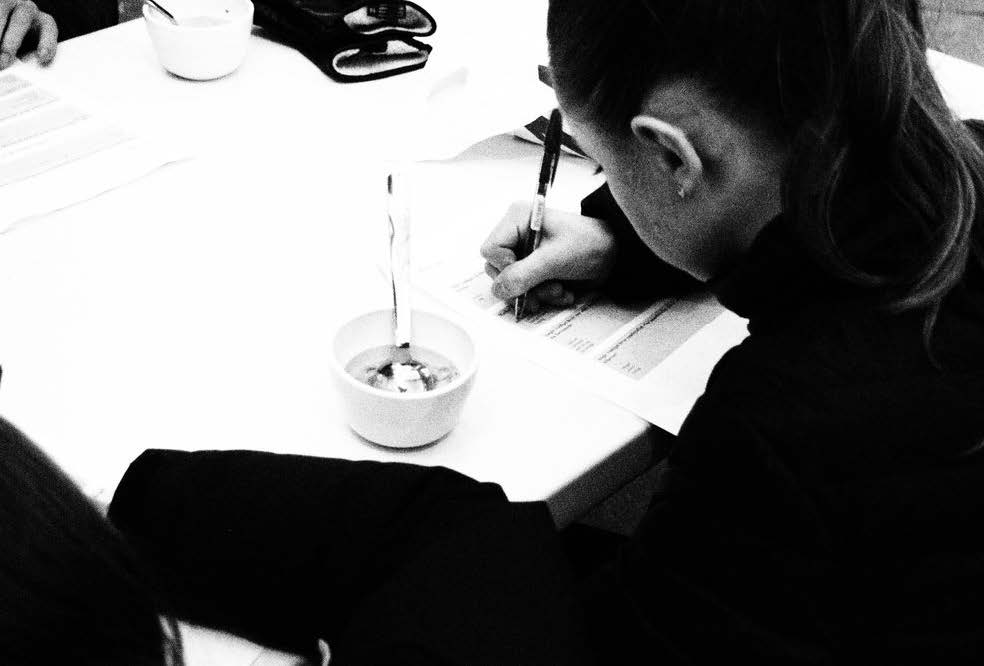
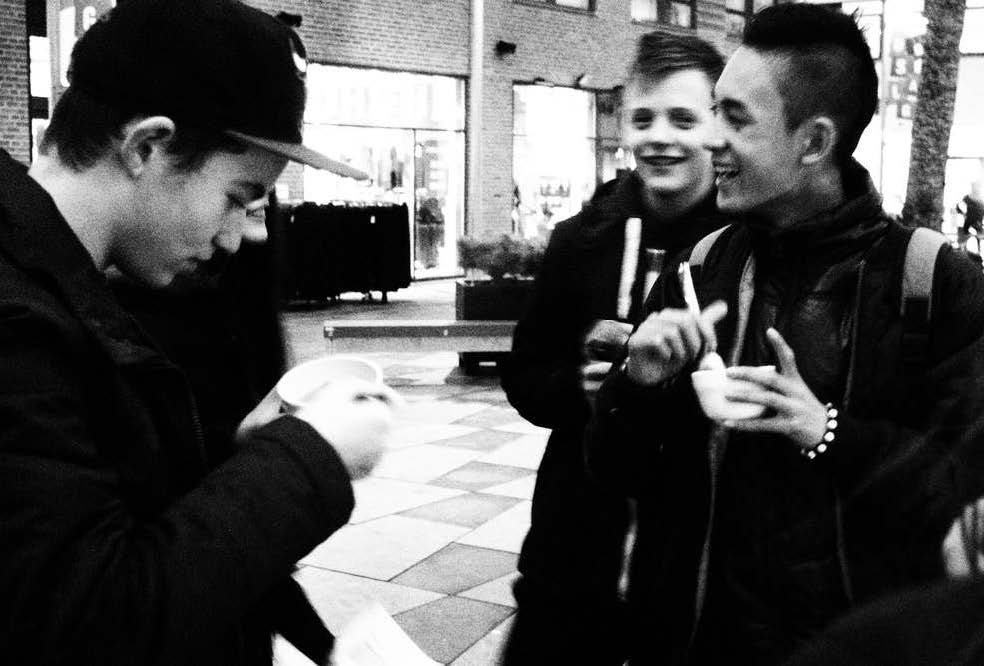
Spinderiet. We definitely overestimated people’s will and courage in trying novel foods. “No thanks, I’ve got a chewing gum in my mouth”, “I just ate”, “I’m vegan”, “Why would I eat bugs”, “Are you crazy”, “ I have no time for such nonsense”, “No time, sorry”, “Oh no, insects, no, no, I thought it was free coffee”, “No thanks, I’ve got a girlfriend” were some of the reactions I got approaching our potential targets. At the Valby mall women especially did not like the idea of a bee larva soup dégustation on this crisp winter afternoon. On the other hand when I, as a woman, challenged young and middle-aged men to try Jonas’ soup, asking them if they’re “man enough”, they obviously couldn’t say no. It proved to be a good strategy and we got a decent number of hits with this method. Nevertheless, my utmost respect goes out to a mother of two boys, I’m guessing a 5- and a 9-year-old, who didn’t hesitate having a fun and educational pit-stop at Jonas’ soup shack. What a cool mum! And the boys loved it too.
Field’s. Damn, even harder than the previous location. People at Field’s were on autopilot, wired to their smartphones, impossible to be reached and couldn’t be bothered to take part in our wacky arthropodan experiment. It seemed as though the “normal people” at Field’s that cold and grey afternoon had no interest in “new foods”, and as a matter of fact, using those two words in the first sentence of approach was not the way to go. Enquiring “Have you ever eaten insects before?” had a slightly better effect, but still didn’t do the trick. Frustrated, we had to face the obvious: people were just more neophobic in this part of town. Third time’s the charm, we thought. However well one prepares for such fieldwork, trying to reach out to a maximum number of people across the maximum range of a crowd is a real Rubik’s cube.
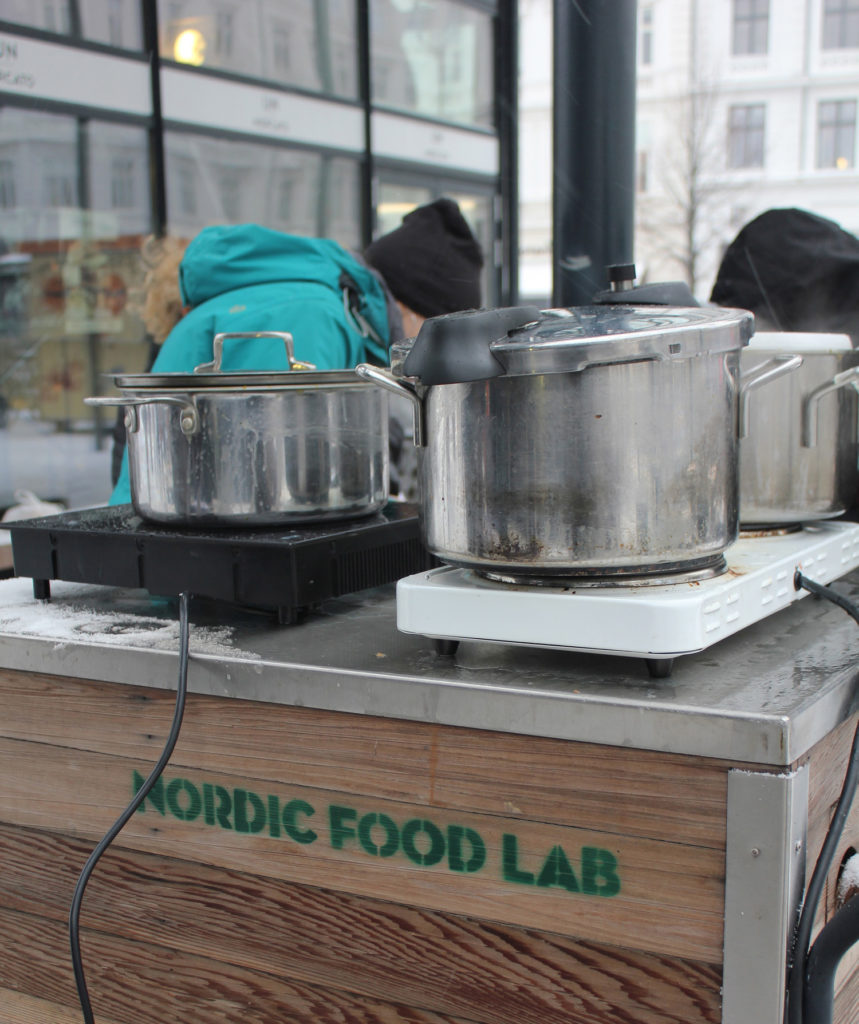
Torvehallerne. “Foodies” and gourmands pilgrimage here for quality food. Also a lot of tourists come here to savour the “chic and pure” taste of Copenhagen – the perfect crowd for our fieldwork. Of course, it had to be the coldest day so far this winter. Typical. With icy wind and snow freezing to the core, we had our doubts about how well it could go. We served the soup out of our very cool Lab bike right outside the entrance to the market. Whether it was the weather or the slow Monday, we didn’t have the same stamina in our approach. However, to our happy surprise, people actually came to us. The ‘Nordic Food Lab’-branded bike surely helped in attracting curious eaters. Not only did people want to try the soups, but they were keen on learning more about insects as food. We had the privilege of feeding an Austrian noma chef, a professor of landscape architecture (and his gorgeous 1 year old Samoyed doggie too), a group of business school exchange students from Australia, just to name a few. All in all, Torvehallerne was the most fruitful of the three locations.
(Don’t) Stop bugging me
Close to a hundred people accepted the challenge of tasting Jonas’ bee larva special, keen on trying a novel ingredient with potential for expanding cuisine. Unfortunately, at least the same amount, if not more, bluntly declined. For some reason, men were more prone to savour the soup than women were. An observation that made us hopeful was that kids and teenagers seemed more curious and keen to eat the larvae. Could it be they are more open and have a different attitude to the future, or just a battle of gaining coolness points by doing something outrageous? Let’s be positive and go with the first idea. Quite a few elderly people proved to be gutsy too, even though most were hard to convince at first. They were definitely more open to spare us ten minutes out of their busy schedules than others. Yet if we only managed to hold people’s interest while presenting our motivation in a few sentences, it opened up a window in most people’s minds for what they might consider food. It also proved easier to attract couples or small groups. Peer pressure and/or encouragement from loved ones also seemed to make it easier to accept and grasp what we were trying to do.
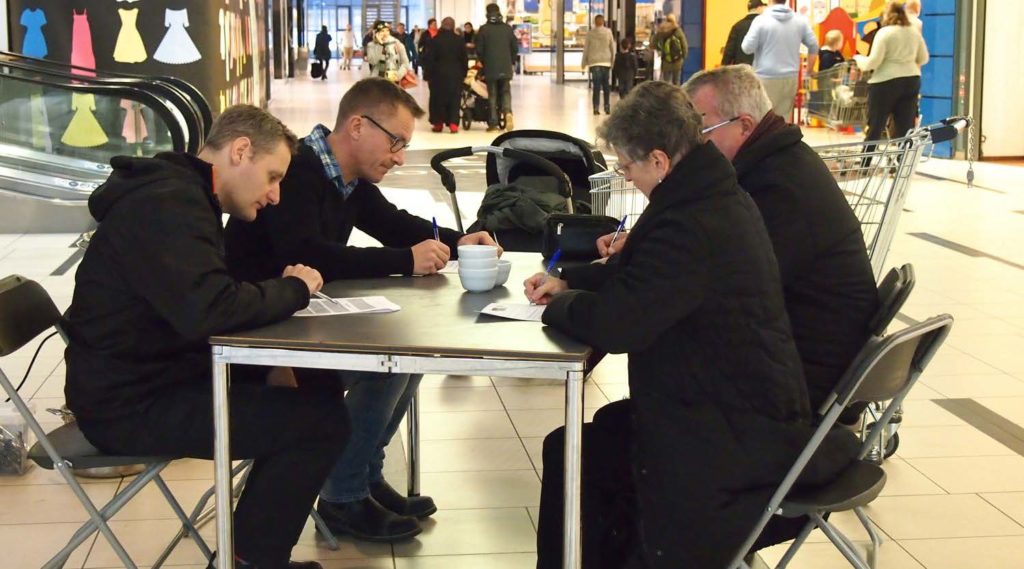
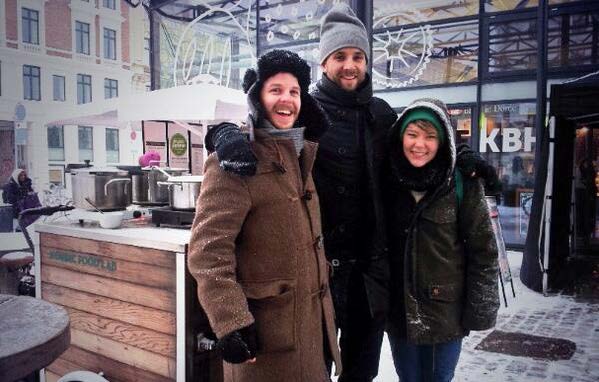
Most importantly, these taste experiments in the field made us reflect on how crucial it is to not forget about all the “normal people” out there. Whether it’s about them having different tastes or a less-strong attraction to the new and unusual compared to the people in our immediate surroundings is a big question worth thinking about. What is usual here at the Lab is often weird and disgusting for many folks out there. Doing what we do is exciting and fun, at times both dippy and inspiring – but if we fail to reach out and convince others unlike us to at least give some of these foods a try, what is the point in the long run? After all, our ultimate aim is to share our food and ideas with everyone, not just preaching to the choir or worse, fuelling a load of foodie onanism.
In the car after our third and last guerrilla soup run, we drove in silence. I think both Jonas and I had a lot on our minds, many impressions and many questions without simple or straightforward answers. As we parked the car outside the Larva-cave, we glanced at each other and smiled. We both knew… we’re lucky to be where we are and this experience was a much needed reality check. We need reminders of the fact that there’s a whole world out there to reach in order to make people look at bugs – or seaweed, or microbes, or any other neglected or underutilised ingredient – and go, “Yum, I’ll have that for lunch.” For us, it is the kick we need to give all of this madness a real purpose.
